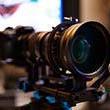-
Posts
4 -
Joined
-
Last visited
Reputation Activity
-
 JBowdach got a reaction from maxotics in Easiest workflow - MLV Canon 5D mark III
JBowdach got a reaction from maxotics in Easiest workflow - MLV Canon 5D mark III
Hey Wolf33d,
I figured I'd jump in as I wrote the article originally referenced. Many thanks for sharing it here and I'm glad you found it helpful. That ProRes444 workflow retains the majority of the detail (99%) present in the RAW images, HOWEVER you just lose the ability to adjust color temperature and exposure of the raw files. With that being said, the files are such high quality, these files are such high quality, you can really correct almost any issue you can using RAW files, it will just take slightly longer (taking a few minutes, nothing crazy). On the other end, working with native RAW files requires significantly more storage and renders way slower (1-2 fps unless you have a very fast RAID).
Should you want to, you can make corrections to exposure and color temp in MLRawViewer, but I usually just converted the files straight over to ProRes444. You can apply Filmconvert directly to the "flat" ProRes file and start coloring from there.
The only reason you'd want to go through Resolve is if you MUST use the BMDFilm color space, which is what QuickHitRecord had mentioned. While I've also used this method (and recommend it for other uses), it has a couple of additional steps so I did not include that in the walk through. My goal with the article was to provide the easiest method to get the highest quality files so you can get straight to edit and color correction without spending hours on the forums.
-
 JBowdach got a reaction from nahua in Easiest workflow - MLV Canon 5D mark III
JBowdach got a reaction from nahua in Easiest workflow - MLV Canon 5D mark III
Hey Wolf33d,
I figured I'd jump in as I wrote the article originally referenced. Many thanks for sharing it here and I'm glad you found it helpful. That ProRes444 workflow retains the majority of the detail (99%) present in the RAW images, HOWEVER you just lose the ability to adjust color temperature and exposure of the raw files. With that being said, the files are such high quality, these files are such high quality, you can really correct almost any issue you can using RAW files, it will just take slightly longer (taking a few minutes, nothing crazy). On the other end, working with native RAW files requires significantly more storage and renders way slower (1-2 fps unless you have a very fast RAID).
Should you want to, you can make corrections to exposure and color temp in MLRawViewer, but I usually just converted the files straight over to ProRes444. You can apply Filmconvert directly to the "flat" ProRes file and start coloring from there.
The only reason you'd want to go through Resolve is if you MUST use the BMDFilm color space, which is what QuickHitRecord had mentioned. While I've also used this method (and recommend it for other uses), it has a couple of additional steps so I did not include that in the walk through. My goal with the article was to provide the easiest method to get the highest quality files so you can get straight to edit and color correction without spending hours on the forums.
-
 JBowdach got a reaction from wolf33d in Easiest workflow - MLV Canon 5D mark III
JBowdach got a reaction from wolf33d in Easiest workflow - MLV Canon 5D mark III
Hey Wolf33d,
I figured I'd jump in as I wrote the article originally referenced. Many thanks for sharing it here and I'm glad you found it helpful. That ProRes444 workflow retains the majority of the detail (99%) present in the RAW images, HOWEVER you just lose the ability to adjust color temperature and exposure of the raw files. With that being said, the files are such high quality, these files are such high quality, you can really correct almost any issue you can using RAW files, it will just take slightly longer (taking a few minutes, nothing crazy). On the other end, working with native RAW files requires significantly more storage and renders way slower (1-2 fps unless you have a very fast RAID).
Should you want to, you can make corrections to exposure and color temp in MLRawViewer, but I usually just converted the files straight over to ProRes444. You can apply Filmconvert directly to the "flat" ProRes file and start coloring from there.
The only reason you'd want to go through Resolve is if you MUST use the BMDFilm color space, which is what QuickHitRecord had mentioned. While I've also used this method (and recommend it for other uses), it has a couple of additional steps so I did not include that in the walk through. My goal with the article was to provide the easiest method to get the highest quality files so you can get straight to edit and color correction without spending hours on the forums.




